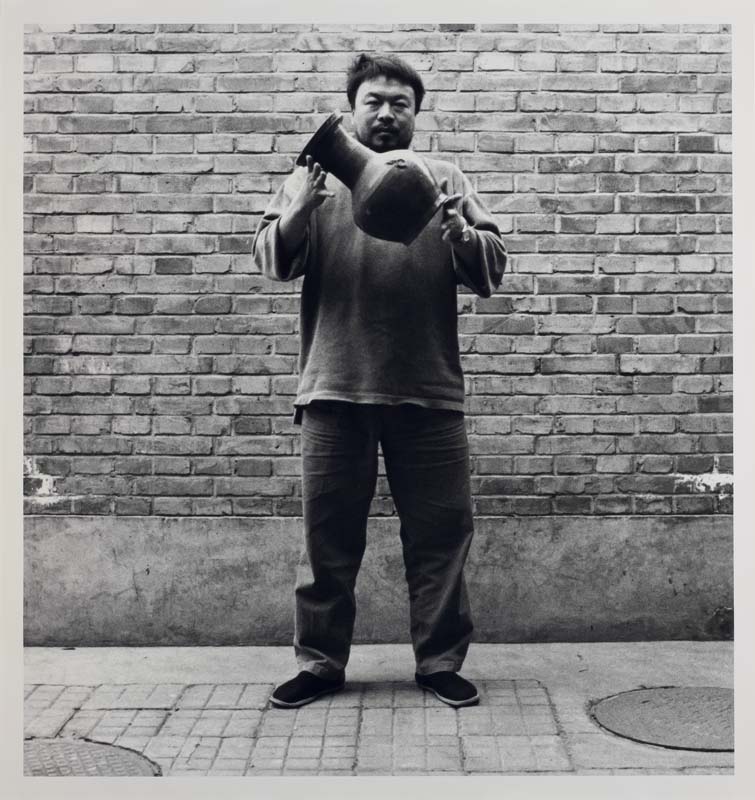We acknowledge the Traditional Owners of the land on which the Queensland Art Gallery | Gallery of Modern Art stands and recognise the creative contribution First Australians make to the art and culture of this country.

Ai Weiwei / China b.1957 / Dropping a Han dynasty urn 1995 / Gelatin silver photograph on paper, AP / Three sheets: 180 x 169.5cm (each) / Purchased 2006 through The Queensland Government’s Gallery of Modern Art Acquisitions Fund / Collection: Queensland Art Gallery | Gallery of Modern Art / © Ai Weiwei
Ai WeiweiDropping a Han dynasty urn 1995
Not Currently on Display
Ai Weiwei’s Dropping a Han dynasty urn 1995 is composed of three large-scale black-and-white photographs depicting the artist in the act of dropping a highly valuable, millennia-old ceramic urn. This deliberately shocking act makes us question why the artist would do such a thing.
In recording its destruction, the meaning and the value of the urn is changed — it is no longer an ancient and precious object of fired clay, but one that is the subject of a photograph. Without documenting these performances, very few people would know of their existence and they would not be able to be experienced again, without the photographs. This important relationship — between performance art and the photographic documentation of the performance — shows that the boundaries between art disciplines are blurred in contemporary art.
Ai Weiwei is a discerning connoisseur and collector of Chinese antiquities. He takes objects that are hallmarks of Chinese cultural excellence – Buddhist sculpture, Ming and Qing furniture, Neolithic and Han dynasty ceramics – and employing strategies of destruction, reconstruction and preservation, playfully transforms the originals to create ‘an ordered disorder’ 1 in works that challenge the authority of cultural value, meaning and authenticity.
Such a questioning, he proposes, exposes more fundamental truths: ‘[by] changing the meaning of the object, shaking its foundation, we are also changing our own condition. We can question what we are’. 2
Endnotes:
1. Merewether, Charles (ed.). ‘Ai Weiwei Works: Beijing 1993-2003’. Timezone 8, Hong Kong, China, 2003, p.8.
2. Ibid., p.30.